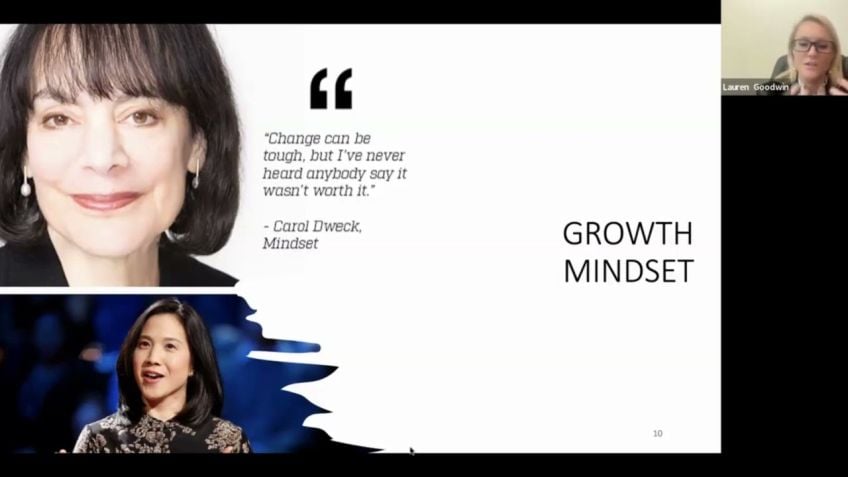Tran Decision Making: Why the last mile of analytics should be your first priority? by Anh Tran
The Significance of the Last Mile of Analytics: Making It Your First Priority
Hello inquisitive minds! I am Ann, a devoted data analyst and data scientist enjoying a thriving career spanning over 11 years across a diverse range of industries such as finance, technologies and wholesale in Vietnam, Singapore and the Netherlands. Today, I am about to shed light on why the 'last mile of analytics' should be your very first priority.
Our Culinary-inspired Agenda
Just like a meal at a restaurant, our session today has four primary components:
- Understanding what the last mile in analytics is
- Unraveling the reasons you should care about it
- Predicting what could happen based on the choices we make
- Collating the key takeaways
The Dire State of Data Science Projects
Regrettably, a massive 87% of data science projects never see the light of day in terms of reaching production, according to a recent shocking study. This revelation prompts us to dig deeper into why it is so.
Why So Many Project Failures?
In an attempt to decode this mystery, we journey through the typical analytics process. The process usually begins with a business problem, then moves to data examination, followed by infrastructure and analysis, and finally winds up at the stage of presentation. Unfortunately, several projects falter at this stage due to a lack of knowledge sharing, difficulty in communicating the intricate data science components to stakeholders, or in some cases, the results not reaching decision-makers. For the projects that do secure stakeholder buy-in, transitions could still lead to failure.
The Last Mile in Analytics: A Closer Look
Broadly speaking, the last mile in analytics bridges the gap between the analytics result and the action taken thereafter. From a bird's eye view, it's the ultimate step to reach the target. However, it fails to fulfill the void between the analytics outcome and the action taken because of that analysis.
What Happens When We Take Certain Actions?
While there are no firm stories about the consequences of adjusting the last mile of analytics, a study by McKinsey compared top-tier companies with average companies and discovered commonalities among the top-tier leaders. They found that these company leaders heavily invested in three critical areas: aligning strategy, creating the correct data technology and people foundation, and conquering the last mile. Substantially, they showed a higher level of commitment to bridging the gap between analytics and action.
Learning from Failures and Making Calculated Decisions
Drawing from these observations, what should we do differently? Emulating 'Best Suited' practices tailored for specific company stages and industries could be a solution. To counter the ongoing challenges, you could:
- Prioritize business adoption as a key metric.
- Share failures and study the reasons behind them.
- Involve stakeholders early and maintain frequent communication
- For each business question, assess if complex analysis is called for
- Adopt data metrics for data governance
- Executed the most impactful decisions, especially related to data infrastructure, first.
The path to closing the gap in analytics or strengthening the last mile requires a strategic approach where we start with the end in mind. This can be achieved by making business adoption an essential metric, involving stakeholders early, frequently updating them, and making the most impactful decisions.
In conclusion, it is important to understand the potential costs when deciding to invest in infrastructure.
Thank you for attending the session, I look forward to hearing your feedback. Stay inquisitive and continue expanding your knowledge!
Video Transcription
Welcome everyone to the session. Why should the last mode of analytics be your first priority before get into the session? A bit of introduction about myself.My name is an and currently I am the senior data scientist as Devo team with er technology consulting firm and we are hiring so feel free to go to the website to learn more about the vacancies. And I am a passionate data analyst and data scientist uh with more than 11 years of working experience in different industries such as finance, technologies and wholesale in Vietnam, Singapore and now in the Netherlands, uh feel free to connect with me through Linkin. Um Yeah, and actually my name is Ann. I forgot to mention about that. Um The agenda today has four main parts just like when you go into the restaurant. So uh you start with the level one appetizer and then main course and then desserts and then uh some people like to drink throughout the meal, but some people like to have beverage at the end of the meal. So similarly, we we have four level first, we try to understand was it the last mode in analytics? And then why did uh um was it the last mile? And what happened? Why we need to care about the last mile uh in analytics?
And why is the problem happened? And then after that, we try to understand what could happen or what's likely to happen if we do A or B or C. And then uh at the end, we will try to understand what should we do or uh in a nutshell is the key takeaway of the presentation. So what happened? Um So uh in the slide, uh here you will see uh a rectangular and in the rec rectangular is you have 12 cells and each of the cells are representative represent for around 11% of the data science projects. And the big question here is that how many projects successfully uh go into production? So um you can think uh think about this or just have any uh number that you get in your mind. And here is the answer. So um if I call the percentage uh of data science project die before going to production uh will be the black cell and the one that uh survive in the blue cell, then let's let's see how many blue cell left in reality. So it's, it's not 25% die before production and it's not 50% die before production. And surprisingly, it's not 75%. And the answer is 87% of data science projects never make it into production.
And this uh quite a shocking um result according to the study and you uh feel free to Google it and find out more about the study. But this is the fact. So this kind of like raise the alarm, then we need to try to understand what this is. Uh what is ha is ha why this has happened. And we try to find out the reason to look into it and fix the issues. So why did this happen? So I would like to uh describe um all the reason uh that the study show why uh 87% of the project fail uh through the graph. Here is the icon is the analytics journey. So first, normally uh data design project start with a business problem. So the stakeholder will have some questions and then um for some analysts or scientists, uh they don't even want to challenge the status quo. So they started to do uh the analysis without asking whether um without asking like what's the problem? I mean that what's the score?
What is the impact whether it needs the analysis? And then after that, they look into the data only after this. They claim the data that the data is too difficult to work with or they don't have enough resources, the data are not difficult to work with. For example, it doesn't have the format uh that they wanted or the data sit in different systems that doesn't have the commons uh joke uh especially the company after M and A um is very uh is very common that two company after the me and acquisition the the data system is very different.
And then after that, they look into the infrastructure and again, at this time playing the infrastructure. So yeah, so apparently most organizations are highly silo. So those are uh those are the answer from the study that they range um according to the percentage like uh what are the most common reason that lead to the failure of the project? And then after that, they carry out the analysis. And then after that, uh after the analysis, they do the presentation to persuade the stakeholder. Uh However, at this fact, um a lot of project fails because that um they um lack of knowledge sharing and is uh they find it difficult to explain the data science component to the stakeholders or the results not view by the decision makers. Some, some of the projects successfully uh persuade the uh the stakeholder on board, however, is still end up with the same um destination because of uh there is some transition in between. So for example, because of the restructure of the company, uh so some uh data scientists that work with an analysis project before hand over to another, another team where they don't necessarily have the knowledge or the motivation to maintain the model.
So uh at the end of the day it leads to the project failure. So this is the whole analytic journeys and uh all of the common reason explain why the project failed. So um some of the past, we also see that um it can begin differently but everything end at the same destination that the projects fail. So what is the last model in analytics? Exactly. So we can see here last month, either gap between analytics result in action that's taken thereafter. Or in other words, an analysis want to make a big impact or make the impact in business, but it failed to uh it failed in the business adoption stage or it failed in fulfill the gap between analytics result and the action taken because of that analysis. So if you imagine the the whole analytic journeys as AAA run um a runway, then it's the last step to reach the destination, then uh what could happen or what's likely to happen uh if we take the action. So um officially, there's no uh story to learn about that. For example, if we do experiments, some company do um like a fix the less amount of analytics, then what is the results? There's no official story about that.
But Mackenzie companies uh did a study that they compare uh like the top uh companies and uh the normal company and try to find out what are the reason that lead to the differences. What, what they find out is that all of the um like the 9 90% 90% of the companies that make themselves the market leader have things in common that they all invest heavily in the last miles of analytics and is divided into three different categories. The first is aligning on strategy. The second building the right foundation of data technology and people and the last one it conquering the last mile. Uh So you can see that uh the last month here is like whether it's collaborate with our team or um or doing the um analytic investment, uh everything they try to focus on making the uh fing the gap between analytic result and the action taken there, actor. So here um in a slide, it also breaks down a lot uh on how they do it. Um But um for the time uh be for um because of the uh of the time, then I won't go into the detail. So here, if you look at um the uh breakdown, you can see that uh the top companies are always in uh for the in last month, they always invest uh like at least two times or 2.5 times, 3.5 times.
Uh if uh in the analytics or in the last mile in comparison with other companies, then the question is whether the breakaway company has so much money so they can just simply uh invest in those areas that other company couldn't. The answer is no. The reason here if you look at the chart here, on the left side, you will see that uh imagine that we have the analytic budgets. And on the left side, it will be uh the category where we investors in invested less than 50% of the analytic budgets allocated to last month. So imagine that you have the the the budget to the analytic budget to invest and you divide into uh into a two category, whether you want to invest uh more than 50% of your budget in the last mile or less than 50% of your budget in the last mile. And what they find out is this uh followers or the normal company uh if about 10 of them, so only uh 23% of them invest more than 50% of their budgets uh in the last month. However, that number is quite different in the breakaway company, breakaway company, nine hour train company in a breakaway tier investors, more than 50% of their budgets into the last mile.
So um this is um quite a surprising result that um can provide some insight uh about analytic journeys and uh how to make the impact in analytics. So um if after we learn all about that, then what should we do? Um Some people say, OK, then I I just copy, copy the, the best practice. I call it the best practice. But I would like to use another term would be the best suit practice because uh some company may be in different stage or the company in different industry. So um it's better that the company choose uh the best suit practice for them and go back to the whole analytic journey here. What you want to do if you want to fix the last mile in analytics. Um So, um so we often I um start with the begin, begin with an end in mind, then we can do this. So what we want to do, we want to turn uh the arrow outside. So, um first of all, if you want to do that, why don't we make uh the business adoption a crucial metric? If it's an official metrics, then everyone um will take um like more weight, they put more weight on the business adoption and that they can pay more attention on making the impact rather than um rather than delivering the complex analysis.
And then um if the project fail nowadays more often that uh we see that uh we share the successful projects, how about the project that fail? Um Especially we learn that 80% of the project fail. So uh why don't we share, what's the reason that it fail? Especially if we combine together with the business adoption metrics, then uh in terms of that, why it fail? If we break it down, then we learned a lot. And uh based on my experience also uh working as their clients also work at the consulting companies is uh make a lot of science and it save a lot of time and effort if we involve the stakeholders, only because they can give us the feedback and input. So we can adjust the analysis in time and eventually lead to the inquiry in business adoption. Yes, the few one feedback. And here if we go back one step uh back then this the the analysis projects. So uh some um based on my experience, uh not every business question need complex analysis projects. The first question we need to ask is that how um we need to step back and then see that's like whether that uh we can provide the answer without the complex analysis, how to make the impact. Um What is the impact?
Imagines that we uh that we have to resolve? For example, if the business question is um how serious is the problem of um a partner take over uh like a account take over? Then then before doing any analysis, we can say that like uh OK, imagine that I have that number. Then what's the next step based on the number that I provided? Then if we everything we start with the impact, then the analysis can uh fulfill the gap. This is like the last model in analytics and eventually make a big impact similarly with data governance and data. Uh And um with the state that plan the data and plan the infrastructure Um I think the data serve its own metrics. For example, in terms of uniqueness, freshness accuracies. So those are the metrics. Um So we often talk about business metrics and what's about data metrics if they serve the metrics, so we can fix the issue with the data. And yeah, with the business problem, be more vigilant is, is it better without the uh quantitative analysis? Um So, um based on my consulting experience, um when it comes to uh data infrastructure, we often think that in uh any of the decision need to start with, uh we should make the decision that the most important decision and urgent decision first, uh however, when it comes to uh data infrastructure, it's not always the case.
Uh the recently that uh when people want to have to make a decision that invest in uh architecture, they is because it's quite complex and solve the tone of your knowledge that they don't understand. Well, so they, they tend to delay the most important decision uh later. So they won't they make the uh easy decision first and only then to find out that no decision become the constraint of the most important decision. So, uh what I want to say here or what I learn it as most impactful decisions should be made first, especially when it comes to data infrastructure. So um uh in summaries um in order to close the gap um or uh strengthen the last mile in analytics, we should start with an N in mind and make the business adoption the crucial meric and then be extra vigilant. Uh ask the questions whether uh whether the question is the complex analysis or we can find another workaround to solve the problem and involve only involve the stakeholder only and updates them frequently and makes the most impactful decision first and also consider the opportunity costs costs when we um have the decision in investing in infrastructure.
Because some of the uh with my uh experience after a decision, uh not only have uh not everyone consider the opportunity cost when they make the decision. Thank you. Um Thank for atten attending the session and I really appreciate your feedback. Thank you.





